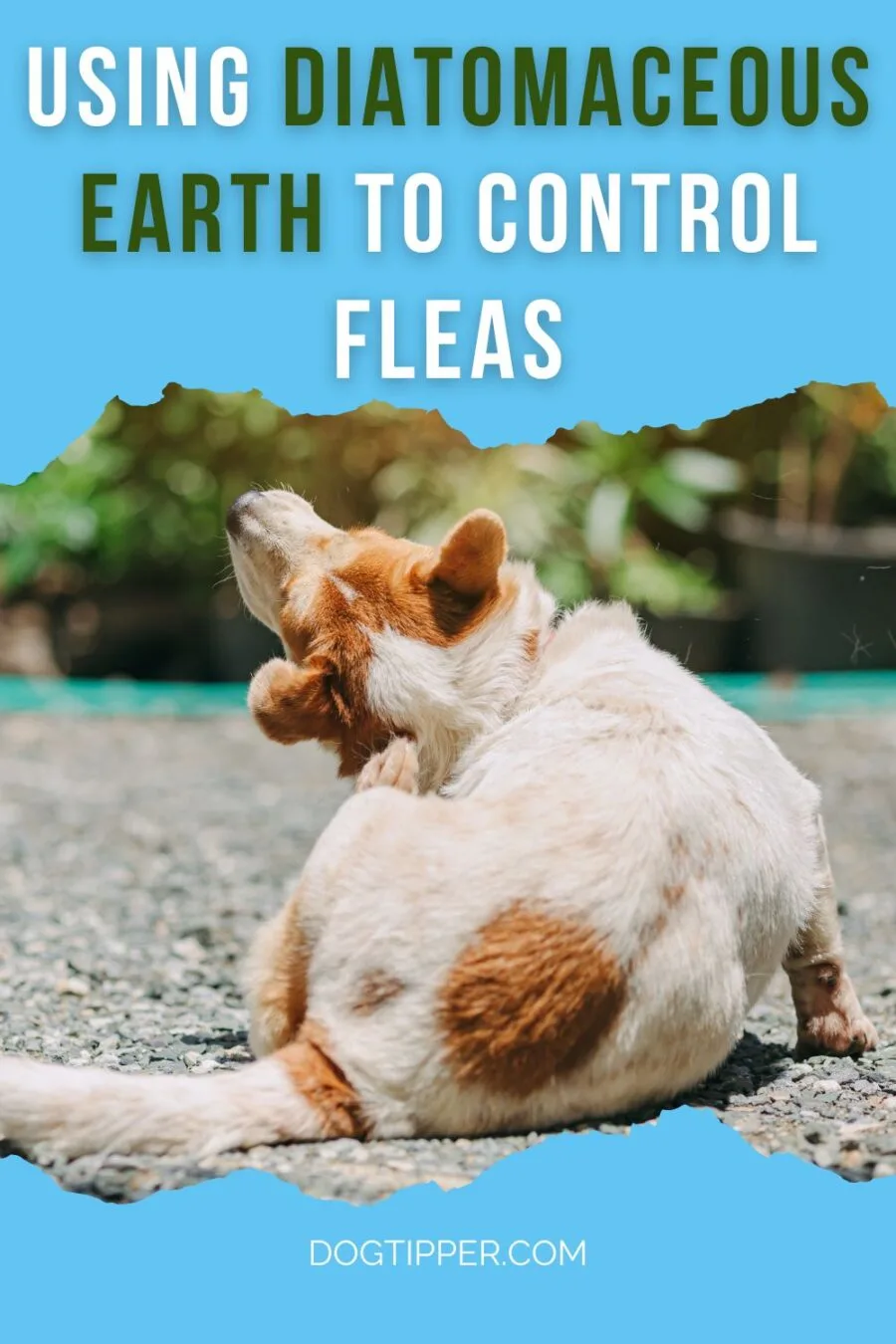We’re always looking for non-chemical ways to control fleas in our yard this time of year. One method we use, which is considered one of the safest ways to treat your yard, is the application of Diatomaceous Earth (often just called DE).

What is Diatomaceous earth?
Diatomaceous earth is a naturally occurring sedimentary rock made up of fossilized remains of diatoms, which are tiny aquatic organisms. It is a fine, powdery substance that is often used as a natural insecticide.
Diatomaceous earth works by dehydrating insects when they come into contact with it. The microscopic sharp edges of the diatoms in the powder scratch the exoskeleton of the fleas, causing them to lose moisture and eventually die.
Which Kind of DE is Safe Around Pets?
It is important to note that not all diatomaceous earth products are the same.
Make sure to purchase food-grade diatomaceous earth, which is safe for pets and humans to ingest, and follow the instructions carefully to avoid inhaling the fine powder.
Do NOT purchase the DE that is intended for pools; it is chemically treated and not for use around pets.
Preventing Fleas with DE
Diatomaceous earth can be used to prevent and control fleas. It is a non-toxic and natural alternative to chemical insecticides and can be applied directly to your dog’s fur and bedding, as well as around your home and yard.
Additionally, diatomaceous earth may not be effective in controlling a severe flea infestation and should be used as part of an integrated pest management approach.
How Do You Use DE in Your Yard?
To use the DE, you’ll sprinkle areas in the yard where fleas congregate. The hard-shelled fossilized remains grates against the fleas and kills them mechanically, not be a chemical means like sprays and pesticides.
Before applying the DE to your yard, you’ll want to get a bandanna or filter mask (like the kind you’d wear to work with sheetrock); the DE is non-toxic but it is a very fine powder that you don’t want to breathe.
You can choose to treat your entire yard (plan on about 8 to 16 ounces for every 1,000 square feet of yard) or just spot-treat the areas where your dogs like to lie. (Ours love to lie in the bare dirt beneath some of our trees so we give that area an extra dusting.)
Here are the general steps for treating your yard with diatomaceous earth:
Choose the right time
Unlike using nematodes to control fleas in your yard, you don’t want to put DE on wet soil. Diatomaceous earth is most effective when the weather is dry, so choose a time when the ground is dry and rain is not expected for a few days.
Prepare the area
Remove any debris or large objects from the area you want to treat. This will ensure that the diatomaceous earth is evenly distributed and reaches the soil.
Apply the diatomaceous earth
Sprinkle a thin layer of diatomaceous earth over the area you want to treat, using a garden spreader or by hand. We put the DE in a shaker, using a jar with punched holes in the metal lid.
Be sure to wear gloves and a dust mask to avoid inhaling the fine powder.
Lightly water the area
After applying the diatomaceous earth, water the area very lightly to help the powder settle into the soil and prevent it from blowing away.
Reapply as needed
Diatomaceous earth can be washed away by rain or watering, so you may need to reapply it every few weeks or after heavy rainfall.
Problems Using DE in Your Yard
It’s important to note that diatomaceous earth can harm beneficial insects, such as bees and butterflies, as well as other non-target organisms. Therefore, it’s important to use it sparingly and only in areas where pests are a problem (such as bare dirt, where beneficial insects are less likely to congregate). It’s also suggested that you apply DE during times when bees are less active, such as early morning or late evening.
Additionally, diatomaceous earth may not be effective in controlling a severe pest infestation and should be used as part of an integrated pest management approach.
We’ve had good luck keeping fleas under control with DE. The dogs appreciate fewer fleas–and we appreciate the absence of fleas and chemicals in our yard!
More Gardening and Yard Articles You Might Like
10 Toxic Plants to Remove from Your Dog’s Yard
The Ultimate Guide to Creating a Dog-Friendly Backyard
Ecological & Environmental Awareness Days
Pin it to remember!

- How to Calm a Dog During Fireworks - June 20, 2024
- Taking Your Dog to See Santa: Tips for a Jolly Visit! - December 7, 2023
- The Pug Dog Price Tag: What You Need to Know Before You Get Your Pug - September 7, 2022
